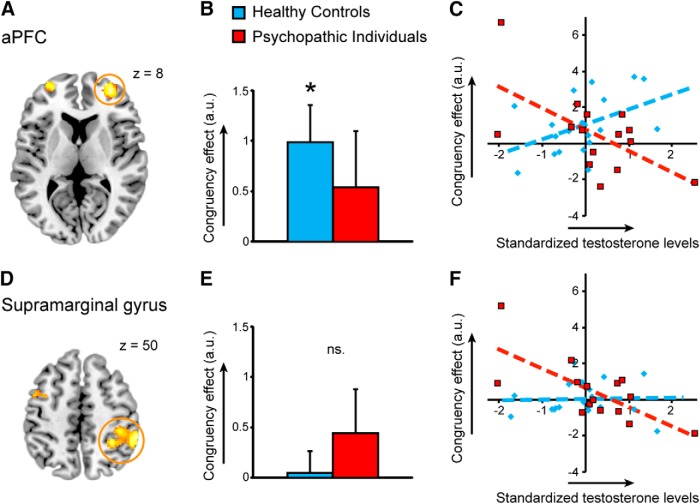Figure 3.
Testosterone modulations of the cerebral congruency effect in psychopathic offenders and healthy control subjects. A, D, Brain image showing testosterone-modulated congruency effects (affect-incongruent−affect-congruent) in the psychopathic offenders in the bilateral aPFC (A) and right supramarginal gyrus (D). B, E, Bar graphs showing the mean activation (±SEM) of the active voxels within the yellow circles per group. *pFWE < 0.05. ns, Not significant. C, F, Scatterplots showing the correlation of the mean activation of active voxels within the yellow circles with testosterone (log-transformed and standardized) for the healthy control group and the psychopathy group. The ROI activations are presented at p < 0.05, uncorrected for visualization purposes. There are no outliers [Mahalanobis distances D 2i < 4.2 (cutoff at p < 0.05; D = 7.74); Barnett and Lewis, 1978; Stevens, 1996]. Healthy control subjects show an increased aPFC activity for the congruency effect and no modulation by testosterone, while in psychopathic offenders endogenous testosterone levels modulate the activity of the aPFC and right supramarginal gyrus.

